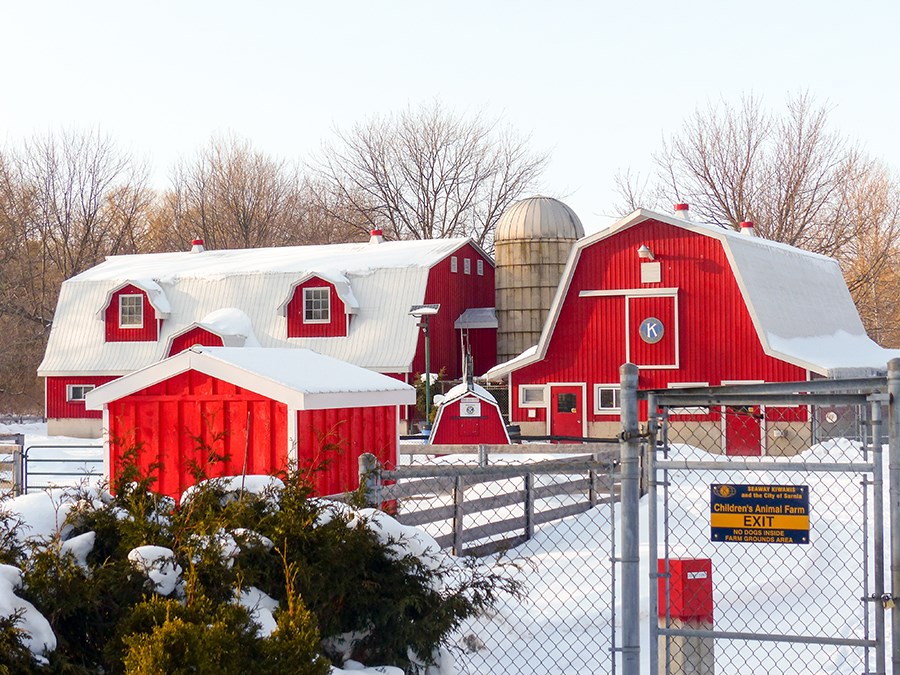Cathy Dobson
What would the moat surrounding the Children’s Animal Farm be if it completely dries up?
Nothing but a muddy ditch with an idle waterwheel and a bunch of disappointed waterfowl, says Toby Bidtnes, long-time member of the Seaway Kiwanis Club.
The club has maintained the animal farm in Canatara Park since the 1950s and is concerned about the receding water in the moat, especially on the west side where it’s all but gone.
When water levels in Lake Huron began to drop a number of years ago, the moat did too. It’s not connected to the lake but relies on ground water that is impacted by the lake, say city parks staff.
The city came to the rescue by pumping tap water into the moat and maintaining the water at two to three feet deep. The city also drilled well holes in an effort to raise moat levels but that only caused pollutants to migrate toward the waterway.
Then, about two years ago the city’s public works department realized government regulations were being contravened when chlorinated tap water was released into the environment.
“Public works ordered it to be shut off,” said operations manager Bryan Prouse. Pumping stopped.
There was no sign the chlorinated water was detrimental to the environment or wildlife. “But it’s one of those rules we just have to abide by,” said Prouse.
“We’ve been trying to fix the problem with the water levels ever since.”
The club and city are working together on the problem, said Cindy Scholten, president of Seaway Kiwanis and a recently elected member of city council.
“It’s a serious concern for us and we’re not certain what steps to take next,” she said.
“But we know the city has many other priorities and the cleanup at Centennial Park is number one,” she said.
The club has also requested assistance from the Lambton Water Centre at Lambton College. It’s hoped students and faculty can come up with a solution, which may involve designing a de-chlorination unit.
Mehdi Sheikhzadeh, Dean of Research and Innovation, told a recent Kiwanis luncheon the college is trying to become an applied research hub for the community and would welcome a chance to look at the farm’s water level problems.
He invited the club to submit an expression of interest to determine if there are research dollars to dedicate to the project.
“It would be wonderful if we could help,” Sheikhzadeh said. “The college is always open to collaboration.”
Meanwhile, Sarnia is in talks with at least one company that supplies de-chlorination units, and the Seaway Kiwanis have put aside $15,000 to find a solution.
